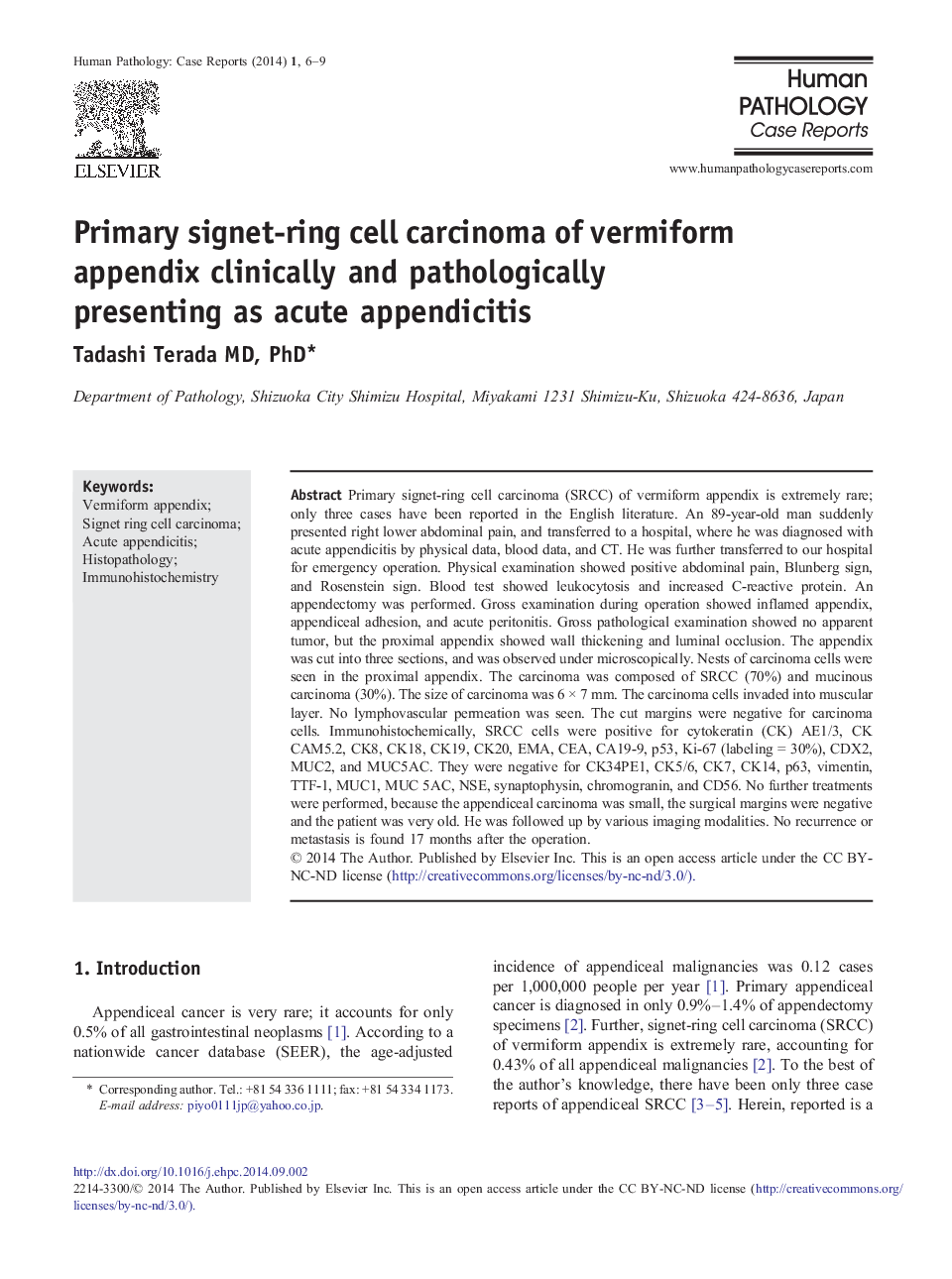| Article ID | Journal | Published Year | Pages | File Type |
|---|---|---|---|---|
| 4135814 | Human Pathology: Case Reports | 2014 | 4 Pages |
Primary signet-ring cell carcinoma (SRCC) of vermiform appendix is extremely rare; only three cases have been reported in the English literature. An 89-year-old man suddenly presented right lower abdominal pain, and transferred to a hospital, where he was diagnosed with acute appendicitis by physical data, blood data, and CT. He was further transferred to our hospital for emergency operation. Physical examination showed positive abdominal pain, Blunberg sign, and Rosenstein sign. Blood test showed leukocytosis and increased C-reactive protein. An appendectomy was performed. Gross examination during operation showed inflamed appendix, appendiceal adhesion, and acute peritonitis. Gross pathological examination showed no apparent tumor, but the proximal appendix showed wall thickening and luminal occlusion. The appendix was cut into three sections, and was observed under microscopically. Nests of carcinoma cells were seen in the proximal appendix. The carcinoma was composed of SRCC (70%) and mucinous carcinoma (30%). The size of carcinoma was 6 × 7 mm. The carcinoma cells invaded into muscular layer. No lymphovascular permeation was seen. The cut margins were negative for carcinoma cells. Immunohistochemically, SRCC cells were positive for cytokeratin (CK) AE1/3, CK CAM5.2, CK8, CK18, CK19, CK20, EMA, CEA, CA19-9, p53, Ki-67 (labeling = 30%), CDX2, MUC2, and MUC5AC. They were negative for CK34PE1, CK5/6, CK7, CK14, p63, vimentin, TTF-1, MUC1, MUC 5AC, NSE, synaptophysin, chromogranin, and CD56. No further treatments were performed, because the appendiceal carcinoma was small, the surgical margins were negative and the patient was very old. He was followed up by various imaging modalities. No recurrence or metastasis is found 17 months after the operation.
